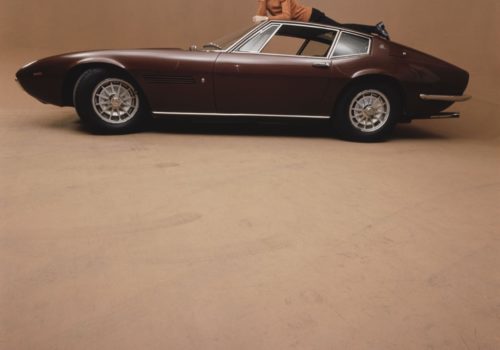The story of the Studio Lévin can be divided into different periods, breaks with the past and changes of style. Everything is about renewal and change in the businesses, jointly managed by the two photographers from 1934 to 1983. A longevity explained by an aptitude for change and by an incredible capacity to navigate the turbulent waters of a changing society: the “Levin way’ reflects the fashions and the morals, embodies the tastes and the imagination of times as different as those of the inter-war years or the sixties.
The Lévin adventure began in 1934 in an apartment in the Rue Saint-Georges in Paris. It was to his home, where the living room was converted into a photo studio, that Sam Lévin brought the models whom he came across in the shooting of films. Very quickly Lucienne Chevert joined him.In 1937 the Studio Lévin moved to the Rue du Faubourg-Saint Honoré. Though Sam Lévin, who was Jewish, sought refuge in the southern zone,in 1942, in order to avoid the confiscation of the Parisian business, Lucienne Chevert took over the studio in the Rue du Faubourg-Saint Honoré in her own name. Until the end of the war she did the studio photography for a dozen films such as Sortilèges by Christian-Jacques or L’homme de Londres by Decoin. The Studio Lévin portraits at the end of the 1930s relied above all on one technique, a sophisticated play of light that stemmed from the cinema studios where Sam Lévin and Lucienne Chevert began and worked regularly.
The aesthetic of their photographs at that time shows many similarities with the films of the period: a subtle harmony of light and shade, faces refined by the soft differences of black and white; bodies modelled with the help of diffuse illumination, gentle highlights, dark or radiant depths. At once, the studio characterises itself by its clientele almost exclusively made up of personalities who are famous or about to become so; few unknowns, some fashion models but , above all, actors and actresses. Soon it would be a generation of singers who would appear in front of the famous studio’s lens. Because the circle surrounding Sam Lévin and Lucienne Chevert is firstly that of show business; the cinema and its stars then pop music and its stars who, in the 1960s, are propelled into the ranks of the most visible personalities.
From the refined sobriety of the black and white print, the studio passes, the day after the war, into the world of colour. A few years later, it exploits with delight the chromatic range of the century “yeah-yeah” then adopts the tangy exuberance of disco. By experimenting with new tones, new decors and new kinds of lighting, the Studio Lévin breaks with the idea that the portrait must necessarily be timeless. In conforming to the new codes, it asserts its own style. It soon prefers the sparkle of movement to the sublime and fixed magnificence: the portrait must be lifelike, closer to the readers and the collectors of the leading acts. However one permanent feature remains: a certain sobriety. Even in the most fiery poses, even in the most eloquent productions, an economy of means and a form of minimalism predominates.
Le studio Lévin
Through September 25, 2016
Maison de la photographie Robert Doisneau
1 Rue de la Division du Général Leclerc
94250 Gentilly,
France
http://www.maisondoisneau.agglo-valdebievre.fr/
















